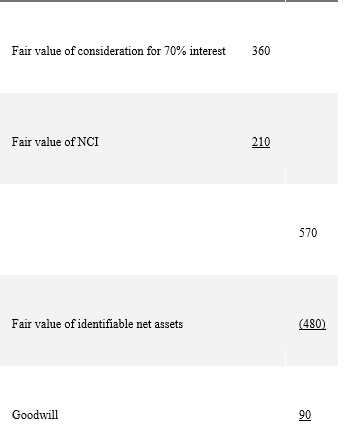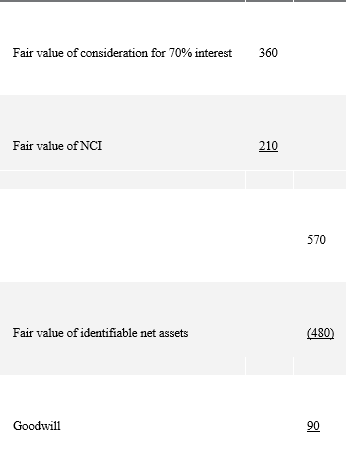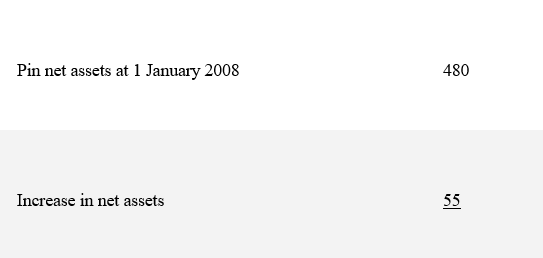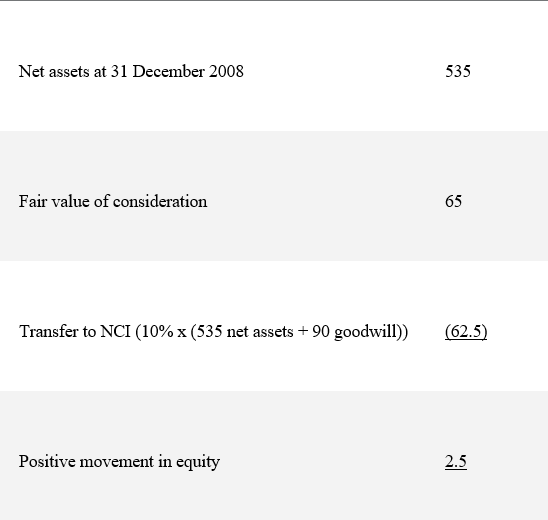Understanding Consolidated Financial Statements
The objective of IFRS 10 is to establish principles for the presentation and preparation of consolidated financial statements. These are the financial statements of a group where the parent and its subsidiaries are presented as those of a single economic entity.
The economic entity approach treats all providers of equity capital as shareholders of the entity, even when they are not shareholders in the parent company.
Impact of Transactions on Equity under the Economic Entity Approach
The economic entity approach in consolidated financial statements (IFRS 10) influences how ownership changes within a group are accounted for, impacting equity rather than profit or loss in certain scenarios:
Partial Disposal with Retained Control: When a parent company sells a portion of its ownership in a subsidiary but maintains control, it doesn't trigger a gain or loss. Instead, the transaction results in an increase or decrease in equity, reflecting the change in the parent's ownership stake.
Acquisition of Non-Controlling Interest (NCI): Purchasing some or all of the NCI in a subsidiary is considered a treasury stock transaction. Similar to buying back your own shares, this is accounted for within equity.
Partial Disposal with Loss of Control: If a partial sale leads to the parent company losing control of the subsidiary, but it retains an interest as an associate, a gain or loss is recognized on the entire original investment. This includes:
Gain or loss on the disposed portion: This reflects the difference between the selling price and the carrying amount of the sold interest.
Holding gain on retained interest: This recognizes the difference between the fair value of the remaining ownership stake and its carrying amount. Both gains and losses are reflected in the statement of comprehensive income.
Extending the Treatment: Amendments to IAS 28, Investments in Associates, ensure consistent treatment by applying these principles to transactions involving associates and joint ventures.
EXAMPLE 3
Step acquisition
On 1 January 2008, A acquired a 50% interest in B for $60m. A already held a 20% interest which had been acquired for $20m but which was valued at $24m at 1 January 2008. The fair value of the NCI at 1 January 2008 was $40m, and the fair value of the identifiable net assets of B was $110m. The goodwill calculation would be as follows, using the full goodwill method:

A gain of $4m would be recorded on the increase in the value of the previous holding in B.
EXAMPLE 4
Acquisition of part of an NCI
On 1 January 2008, Rage acquired 70% of the equity interests of Pin, a public limited company. The purchase consideration comprised cash of $360m. The fair value of the identifiable net assets was $480m. The fair value of the NCI in Pin was $210m on 1 January 2008. Rage wishes to use the full goodwill method for all acquisitions. Rage acquired a further 10% interest from the NCIs in Pin on 31 December 2008 for a cash consideration of $85m. The carrying amount of the net assets of Pin was $535m at 31 December 2008.
Rage has effectively purchased a further share of the NCI, with the premium paid for that share naturally being charged to equity. The situation is comparable when a parent company sells part of its holding but retains control.
Acquisition of further interest
The net assets of Pin have increased by $(535 – 480)m – ie $55m and therefore the NCI has increased by 30% of $55m – ie $16.5m. However, Rage has purchased an additional 10% of the shares and this is treated as a treasury transaction. There is no adjustment to goodwill on the further acquisition.
EXAMPLE 5
Disposal of part of holding to NCI
Using Example 4, instead of acquiring a further 10%, Rage disposes of a 10% interest to the NCIs in Pin on 31 December 2008 for a cash consideration of $65m. The carrying amount of the net assets of Pin is $535m at 31 December 2008.

The parent has effectively sold 10% of the carrying amount of the net assets (including goodwill) of the subsidiary ($62.5m) at 31 December 2008 for a consideration of $65m, giving a profit of $2.5m, which is taken to equity.